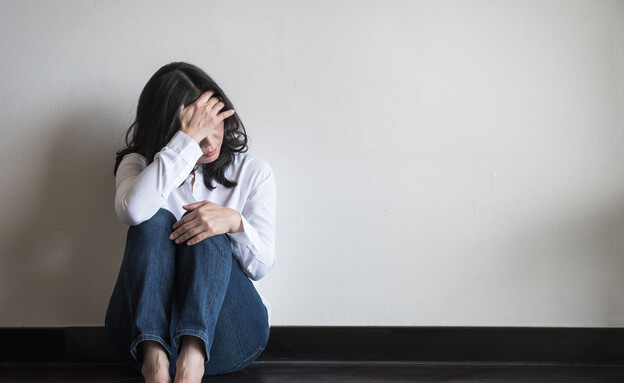How do you actually define anxiety disorders and depression?
“An anxiety disorder is a type of stress, pressure, a bad reaction to everyday events” replies Dr. Lev Korvsky, psychiatrist and expert psychogeriatrician: “However, what turns that continuous stress into a real disorder is the fact that the feeling makes normal functioning difficult and impairs in the daily routine. The professional definition of depression is a very low mood accompanied by functional difficulty.”
How can you identify anxiety and how can you identify depression?
“Symptoms of anxiety manifest themselves in tension and internal pressure, sometimes irritability, disturbing thoughts, etc. If the patient suffers from anxiety attacks, it is likely that additional symptoms will appear, such as excessive sweating, rapid pulse, shortness of breath, chest pressure with radiation to the shoulder, headaches, Dizziness, vomiting, stomach aches and more,” explains Dr. Kurevsky.
“Depression will first and foremost manifest itself in a low mood, a feeling of lack of desire and a lack of enjoyment of life. Along with this, patterns such as apathy, reluctance to social interaction, loss of appetite and weight, etc. are also common. In addition, somatic symptoms can appear, such as pain in different parts of the body.” .
The prevalence is particularly high among the elderly population
One of the population groups in which the prevalence of depression and anxiety disorders is particularly high is the elderly population “Among the boys and girls of the third age there is an increased incidence of depression, mainly due to the circumstances of life. Many diseases and health problems, great loneliness and less support from the environment, these characteristics all contribute to a depressive state” Dr. Kurovski explains.
What are the risk factors for the development of depression and anxiety?
Conditions of depression and anxiety can appear due to a dramatic change in life, but sometimes they appear due to a state of constant stress that makes it difficult for a person to withstand the mental load, for example in responsibilities and functioning in his workplace. All these factors can lead to anxiety, depression or both.”
Do the two disorders tend to develop together, or alternatively does one of them constitute a risk factor for the development of the other?
In some patients, a combination of anxiety and depression can occur. Naturally, anxiety attacks can affect occupational and interpersonal functioning, and this can lower mood and cause the development of depression. For example, a person suffering from anxiety will tend to shut himself in his house. This will cause social distancing, damage to interpersonal relationships, a decrease in sexual function, and more. These phenomena also immediately affect the mood and can be accompanied by symptoms of depression. On the other hand, situations where depression leads to anxiety are less common.
What does the diagnostic procedure for anxiety and depression include?
“The first step in the psychiatric diagnosis includes a comprehensive conversation and asking questions that make the doctor understand the patient’s history. Dr. Korvsky explains and adds: “According to the description of the symptoms, it is possible to understand whether the patient is suffering from a real disorder or whether it is a passing crisis.”
What does the psychiatric treatment for both disorders include?
“The psychiatric treatment of anxiety and depression includes taking drugs. In fact, the same drugs are used to treat both disorders, and they are from the SNRI and SSRI groups (Recital, Cipralax, etc.).
These are drugs intended for daily use that aim to accompany the patient over a period of time and bring balance. Another group is the BDZ family of drugs (Asivel, Lorivan, and Evan) – drugs designed to lower the level of anxiety immediately, at the moment of an anxiety attack. They are usually given for a limited time, as initial treatment.”
Is it important to integrate mental therapy along with medication? If so, why and which treatments in your experience are recommended?
“Definitely. It is recommended to combine the drug treatment with psychotherapy or cognitive behavioral therapy (CBT). CBT treatment is a one-time treatment that helps to deal with the behavior accompanying both disorders and is therefore highly recommended.”
About Dr. Lev Kurovski
Dr. Lev Kurevsky, a specialist psychiatrist since 1980. Since 2004 he has been working in Israel as a specialist psychiatrist. He currently works at the Klalit and Maccabi Health Insurance Fund. A specialist for adults and a graduate of Tel Aviv University in psychogeriatrics.
